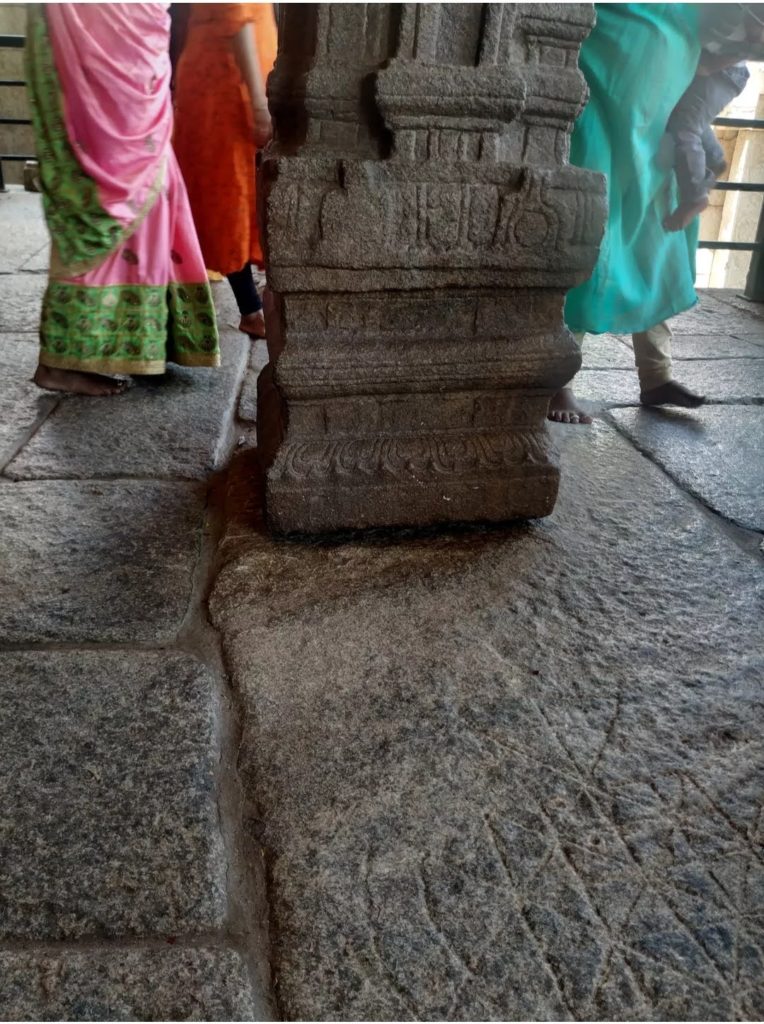Welcome to my website. Today I will be sharing my experience about trip to Lepakshi temple. This temple is situated in Andhra Pradesh, India. It is dedicated to Veerabhadra, an incarnation of Lord Shiva. It is almost 500 years old. Let’s check out 4 things to see in Lepakshi temple, India.
Travel to Lepakshi temple
We went from Bengaluru and it was a 2-hour car ride.
The time can fluctuate a bit depending on which part of the city you live in. We encountered only one toll plaza when we entered Andhra Pradesh. Within 20 minutes of entering the state, we reached the temple. So this temple is located near the Karnataka- Andhra Pradesh border.
This trip was a pleasant experience for us as we got out for a trip after almost a year. Corona has wreaked havoc everywhere and we were extra diligent in following precautions. So even after the government lifted restrictions, we decided to stay at home for our safety.
Inside the Lepakshi temple
The weather was a bit hot even though we didn’t visit in summer. For me, the troublesome part was walking barefoot on the rocks inside the premises. The scorching sun had made the rocks like an oven and our poor feet were crying for some cool surface. Wherever there was shade, we managed to save ourselves but otherwise, we had to endure the heat.
If we keep the weather aside, that place is amazing.

Ramayana connection
According to historians and internet search engines, the temple has a connection to Ramayana. It is said that when Ravana was taking Sita to Lanka, a bird Jatayu came to save Sita. Jatayu fought bravely but was killed by Ravana and couldn’t save Sita. So, this was the place where Jatayu fell. When Lord Ram came searching for Goddess Sita, he met injured Jatayu and came to know that Ravana had kidnapped Sita. Just a few meters away from the temple, there is a big bird sculpture on a rock that can be seen from far away.
When we entered the temple, we saw many idols belonging to Goddess Parvati, Lord Hanuman, Lord Shiva, Lord Ganesha, and others. There were several chambers for different Gods and it took around 20-30 minutes to visit all of them.
Things to see in Lepakshi temple
Here are the 4 things to see with family in Lepakshi temple.
Kalyana mantapa: There was an outdoor structure that was incomplete. As informed, it was supposed to be for wedding celebrations. It was just few pillars standing.

Hanging Pillar: This pillar is said to be hanging as it does not fully rest on the ground. We saw many people putting a large piece of cloth below the pillar and it would come out unobstructed. So this pillar is a mystery as to how such a heavy pillar is standing for so many years without any support from the ground.

There were several pillars all around the temple and it was a sight worth watching. Also, the paintings are a reminder of the ancient world.

Naga statue: This was a hotspot for selfie lovers. The statue has 7 hoods and is definitely worth a mention. I also read somewhere that it is the biggest Shivling in India.

Nandi statue: This is also a major attraction of this place. It is said to be made out of a single rock. It is a bull structure in a sitting position that is very near to the temple.
There is no cement or marble flooring anywhere. It is all rock flooring and this gives a unique experience.
Amenities nearby
So we took one hour to tour the whole temple. There are proper toilets and drinking water facilities for everyone. There is also a place to sit around and relax or have snacks. But I would not suggest taking any food or beverage inside as there are many monkeys around who would love to snatch your snacks. As the weather is hot, please take enough water. Regarding food, I didn’t see any good restaurants nearby so I would suggest you take your snacks too.
Overall it was a good trip. I hope this information would be helpful to you when you visit and see these 4 things in Lepakshi temple, India. Do check out my other blogs such as
How to potty train your child?
Why can’t a girl child complete a family?
If you are interested in story books for kids, do check out my books
Pingback: How to get published: Self-publishing or traditional publishing?